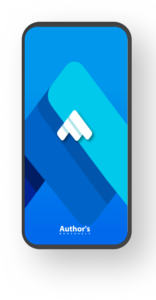Choosing Your Publishing Path: Self-Publishing vs. Traditional Publishing
As you reach the culmination of your novel-writing journey, a crucial decision awaits you: how to bring your masterpiece to the reading world. This decision involves weighing the pros and cons of two distinct publishing paths: self-publishing and traditional publishing. Each path offers its unique advantages and challenges, and your choice depends largely on your goals and aspirations as an author.
In this comprehensive guide, we will explore the intricacies of both self-publishing and traditional publishing, helping you make an informed decision about the next step in your writing journey. We will delve into the merits of each approach, considerations to keep in mind, and how to navigate the path that aligns with your creative vision.
The Thriving World of Self-Publishing
Advantages of Self-Publishing:
Creative Control: Self-publishing grants you full creative control over your work. From cover design to content, you have the final say in every aspect of your book.
Speed to Market: Self-publishing allows you to bring your book to market quickly. There are no lengthy submission processes or waiting periods.
Higher Royalties: You retain a larger share of your book’s royalties when you self-publish, which can be financially rewarding.
Market Reach: With various online platforms and distribution options, self-published authors can potentially reach a global audience.
Freedom to Experiment: Self-publishing provides the freedom to experiment with genres, styles, and niches, catering to a specific target audience.
Challenges of Self-Publishing:
Responsibility: Self-published authors are responsible for all aspects of publishing, including editing, formatting, marketing, and distribution.
Initial Investment: You may need to invest in professional editing, cover design, and marketing services, which can incur upfront costs.
Marketing: Self-published authors must handle their book’s marketing and promotion, which can be time-consuming and challenging.
Stigma: While the self-publishing industry has evolved, some readers and professionals may still associate self-published works with lower quality.
The Established Realm of Traditional Publishing
Advantages of Traditional Publishing:
Professional Support: Traditional publishers offer professional editing, cover design, and marketing support, enhancing the overall quality of your book.
Distribution Channels: Traditional publishers have established distribution networks, increasing the likelihood of your book appearing in bookstores and libraries.
Prestige: Traditional publishing can carry a level of prestige, with your work being selected and backed by professionals in the industry.
Advances: Some authors receive advances against future royalties from traditional publishers, providing upfront financial support.
Industry Connections: Traditional publishers have industry connections that can lead to reviews, awards, and opportunities for your book.
Challenges of Traditional Publishing:
Lack of Control: Traditional publishers often have the final say on aspects like cover design and title. You may have limited creative control.
Submission Process: Getting a traditional publishing deal can be highly competitive, requiring a well-crafted query letter and manuscript, which may face numerous rejections.
Timeline: Traditional publishing can be a lengthy process, taking years from manuscript acceptance to publication.
Royalty Share: Authors typically receive a lower percentage of royalties with traditional publishing.
Choosing Your Path: Factors to Consider
Goals and Priorities: Consider your primary goals as an author. If you prioritize creative control and a rapid publishing timeline, self-publishing may be a better fit. If you aim for broader distribution and access to professional services, traditional publishing may be appealing.
Budget: Evaluate your financial resources. Self-publishing may require an initial investment in editing, cover design, and marketing. Traditional publishing may not offer an advance, but it typically covers production costs.
Genre and Market: Research the genre and market for your book. Some genres, like romance and science fiction, have strong self-publishing communities, while others may have more traditional publishing opportunities.
Timeline: Consider your desired timeline for publishing. If you’re eager to get your book out quickly, self-publishing offers a shorter path. If you’re patient and willing to go through the traditional publishing process, it may be the right choice.
Marketing Abilities: Assess your marketing skills and willingness to promote your work. Self-published authors must be proactive in marketing their books, while traditional publishers provide marketing support.
Navigating the Self-Publishing Path
If you choose self-publishing, here’s how to navigate the journey effectively:
Professional Services: Invest in professional editing and cover design to ensure a polished final product.
Distribution Platforms: Utilize self-publishing platforms like Amazon Kindle Direct Publishing (KDP), IngramSpark, or others that suit your needs.
Marketing Strategy: Develop a comprehensive marketing strategy, including online promotion, book reviews, and engagement with potential readers.
Pricing Strategy: Research pricing strategies for your genre and target audience, ensuring competitive pricing while still generating revenue.
Quality Assurance: Pay attention to formatting, typography, and layout to create a visually appealing book.
Embarking on the Traditional Publishing Journey
If traditional publishing aligns with your goals, here are the steps to pursue:
Query Letter: Craft a compelling query letter and research literary agents or publishers who specialize in your genre.
Manuscript Submission: Follow submission guidelines carefully and submit your manuscript to selected agents or publishers.
Patience: Expect rejection and be patient. Rejections are part of the traditional publishing process.
Professionalism: If you secure representation, maintain professionalism in your interactions with literary agents and publishers.
Contract Review: If offered a publishing deal, carefully review the contract and consider seeking legal advice.
Hybrid Publishing: A Middle Ground
Hybrid publishing blends elements of both self-publishing and traditional publishing. Authors choose this route to retain creative control while accessing professional services like editing, cover design, and distribution. Hybrid publishing can be an excellent option for authors who want more autonomy without shouldering all publishing responsibilities.
Conclusion: Your Literary Journey, Your Choice
As you stand at the crossroads of self-publishing and traditional publishing, remember that there is no one-size-fits-all answer. Your choice should align with your unique goals, resources, and aspirations as an author.
Whether you choose self-publishing, traditional publishing, or a hybrid approach, the most important thing is to celebrate your achievement. Completing a novel is a remarkable milestone in your writing journey, and the path you select to share your work with the world is a testament to your creativity and dedication.
So, take the time to consider your options, weigh the pros and cons, and make an informed decision that resonates with your vision. Regardless of the path you choose, remember that you are part of a vibrant literary community, and your voice deserves to be heard. Celebrate your achievement, embrace your chosen path, and continue to enrich the world with your stories. Your journey as an author has only just begun.

Author’s Bookshelf is a revolutionary bookselling platform that empowers authors by giving them full control over their book listings, allowing them to connect directly with readers and shape their literary journey. With a user-friendly interface and innovative features, it’s a game-changer for writers seeking independence and creative autonomy in the publishing industry.




